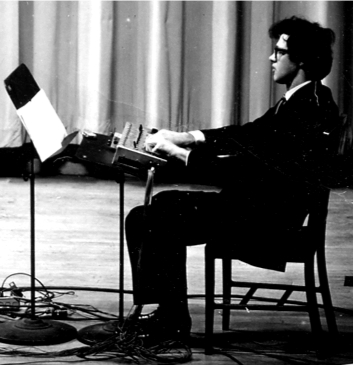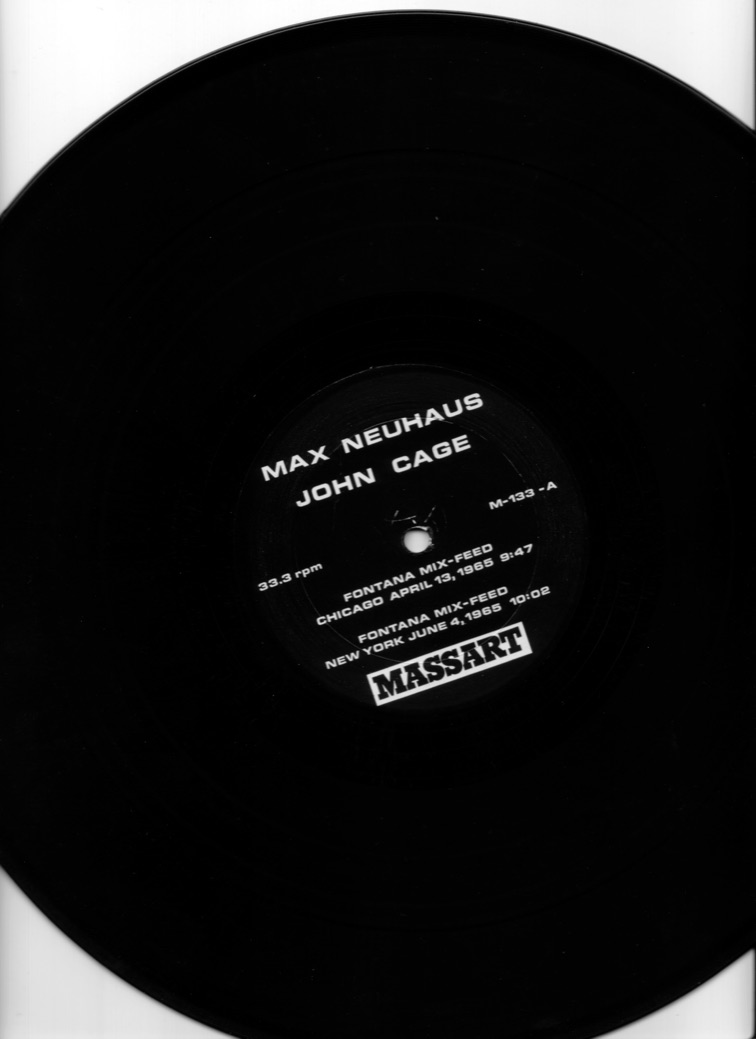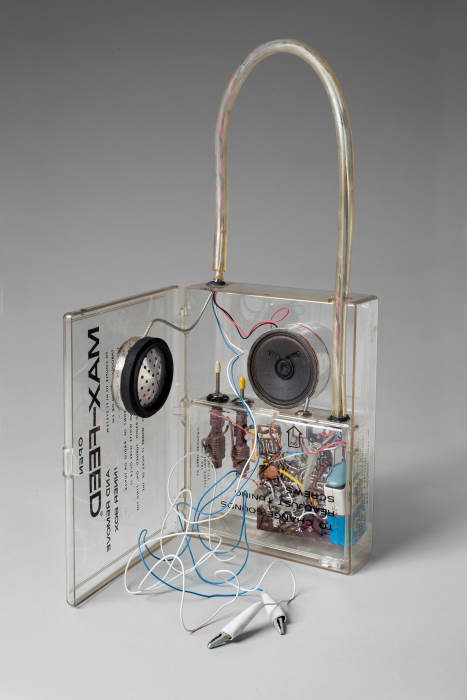1964

Max Neuhaus performing Fontana Mix - Feed, Carnagie Recital Hall, New York City, December 1, 1966
* * *
Performer's Notes for "Fontana Mix-Feed" as recorded Nov. 9, 1967 by Aspen.
I used "Fontana Mix" to make a score, which I called "Feed," for adjustable resistors which are affecting acoustic feedback. In this performance, the adjustable resistors were controlling the frequency response of two channels of feedback which were set up by putting two microphones in the vicinity of their respective loudspeakers.
The score for this performance was made by assigning a ten-second time period to each of the differentiated lines on the opaque sheets. When the transparent sheets with dots were superimposed over these, each dot coinciding with a line dictated a change in one of the resistors during the time period assigned to that line. The specific resistor to be changed was then decided by throwing dice. Throughout the piece, these changes in the adjustable resistors are extremely slow and gradual.
The score removes my taste and musical judgment and allows the electronic and acoustic phenomena of that particular situation to produce the piece. Each time it is played, it is different. In fact, the three times that I performed the piece for this recording, three totally different versions resulted.
Max Neuhaus

Mass art - Fontana Mix-Feed - 4 versions 1968
fontana-mix-feed-john-cage-new-york-june-4-1965
Max Neuhaus was renowned for his interpretation of contemporary music while still in his twenties. In the early sixties, he gave solo recitals in Carnegie Hall and toured America and Europe as a percussion soloist. He traveled with one thousand kilos of percussion instruments to perform his solo repertoire and extended this palette of sound color by inventing several early electro- acoustic instruments. His solo album recorded for Columbia Masterworks in 1968 stands as one of the first examples of what is now called live electronic music.

Max Neuhaus, Max-Feed, 1966. © Estate of Max Neuhaus.
Photo: Cathy Carver Photo dia web
Courtesy The Dia Foundation
* * *
Performer's Notes for "Fontana Mix-Feed" as recorded Nov. 9, 1967 by Aspen.
Press: Aspen no. 5+6, item 21
___
I used "Fontana Mix" to make a score, which I called "Feed," for adjustable resistors which are affecting acoustic feedback. In this performance, the adjustable resistors were controlling the frequency response of two channels of feedback which were set up by putting two microphones in the vicinity of their respective loudspeakers.
The score for this performance was made by assigning a ten-second time period to each of the differentiated lines on the opaque sheets. When the transparent sheets with dots were superimposed over these, each dot coinciding with a line dictated a change in one of the resistors during the time period assigned to that line. The specific resistor to be changed was then decided by throwing dice. Throughout the piece, these changes in the adjustable resistors are extremely slow and gradual.
The score removes my taste and musical judgment and allows the electronic and acoustic phenomena of that particular situation to produce the piece. Each time it is played, it is different. In fact, the three times that I performed the piece for this recording, three totally different versions resulted.
Max Neuhaus
Max-Feed, 1966'I first met Cage also in that year as a member of the percussion ensemble performing some of his works. As I became a well known interpreter of his works in the following years I began to know him better. The only time I actually performed with him I think was once with Merce Cunningham Dance Company in New York sometime before 1968.'
MN/note from Archive corrispondence.